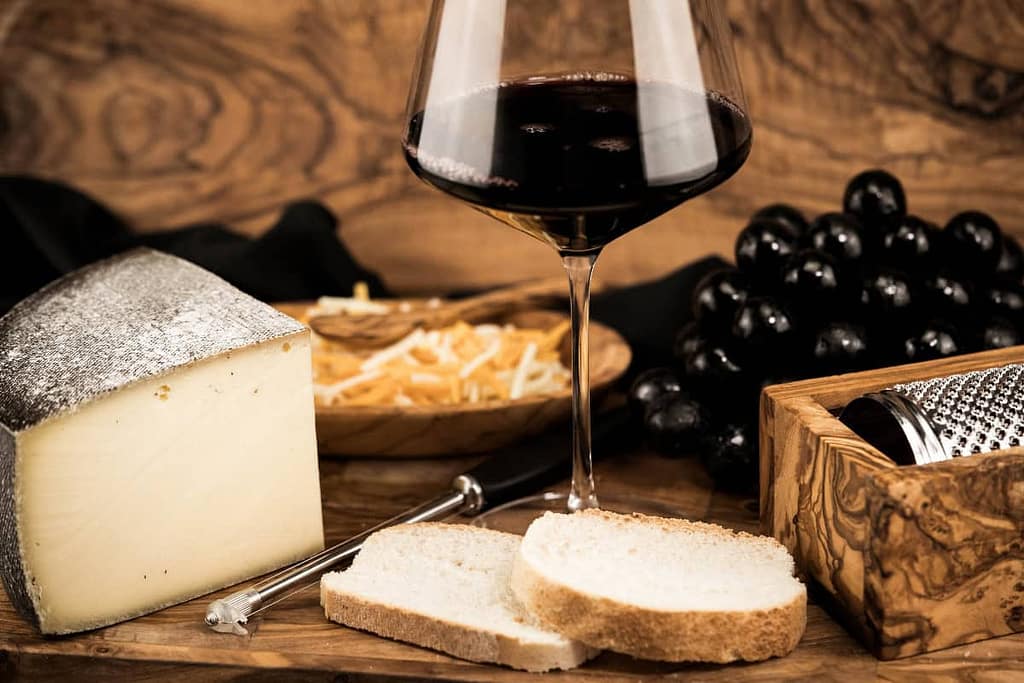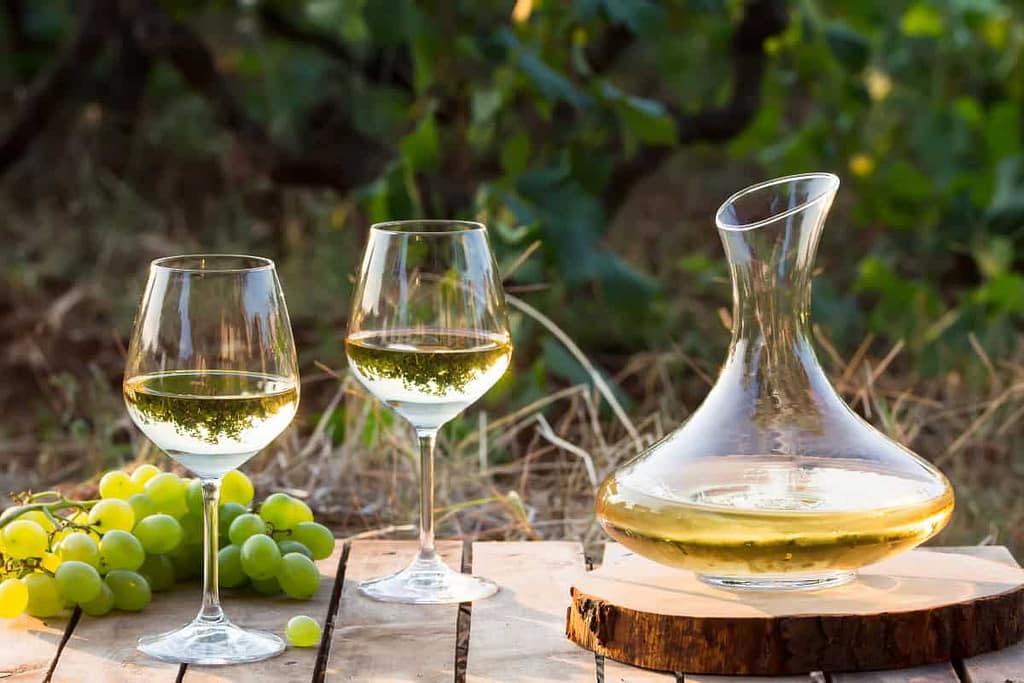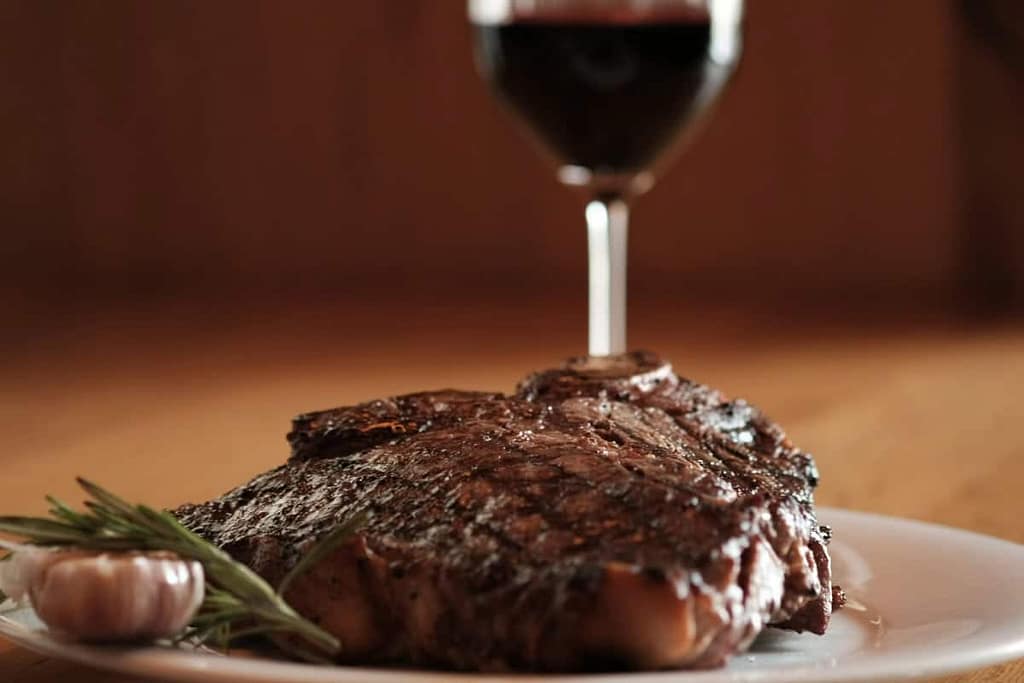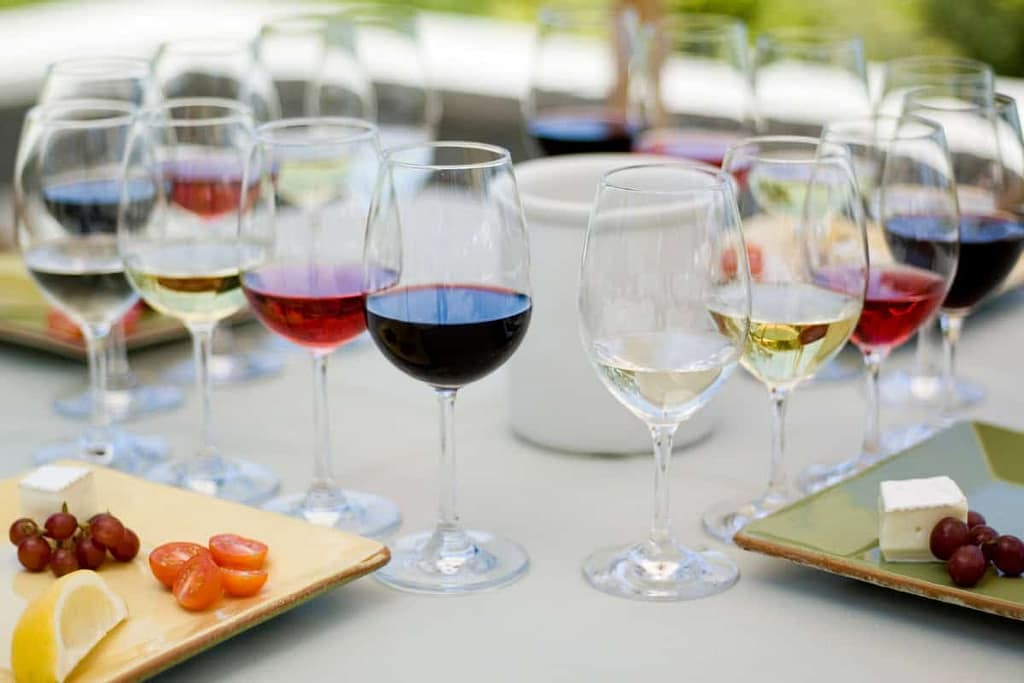Wine Pairing Guide: The Best Food and Drink Match
Wine pairing is a delightful exploration of tastes that seeks to create a harmonious balance between the flavors of food and wine. The perfect match can elevate a meal from good to extraordinary, turning dining into an experience.
A classic pairing success is a full-bodied red wine like Cabernet Sauvignon with red meat. The bold flavors of the wine complement the richness of the meat beautifully. Similarly, a Pinot Noir, with its more subtle notes, pairs well with lighter dishes such as white meats and pasta dishes, bringing out the best flavors in both the food and the wine.

Certain wines lend themselves exceptionally well to particular foods due to the chemical compounds they carry. For example, a dry Rosé, known for its versatility, can be a great match for creamy sauces and spicy dishes as it offers a refreshing counterbalance without overwhelming the palate.
When dealing with sweet food, sweeter wines or dessert wines, such as an off-dry Riesling or a sweet port, are in order. They share complementary sweetness levels, creating congruent pairings that are a treat for the taste buds.
For those favoring vegetarian options or lighter fare, a high acidity wine like a Pinot Grigio or a Grüner Veltliner can be an excellent choice. These crisp white wines cut through the fats of soft cheeses like goat cheese, offering a perfect balance to the creaminess. They are also a good match for the zest of a fresh salad.
Basics of Wine Pairing
Selecting the right wine to complement a meal enhances both the flavors of the food and the characteristics of the wine. This guide provides a straightforward approach to pairing, focusing on key components to create a harmonious dining experience.
Understanding Taste Components
In wine pairing, balance is integral, and it hinges on understanding the primary taste components of both food and wine: sweet, sour (often referred to as acid), bitter, salty, and umami.
Sweet foods can benefit from the contrast of a wine with high acidity, as seen with a classic pairing of lemony desserts and crisp white wines. Conversely, a bit of sweetness in wine can temper the heat in spicy dishes, making an off-dry Riesling a good match.
The Role of Tannins and Acidity
Tannins and acidity are pivotal in determining a wine’s interaction with food. Tannins, found predominantly in red wines like full-bodied red wine and Cabernet Sauvignon, have a drying sensation and bind well with the fat in red meat, enhancing the overall taste.
Acidity, prominent in wines such as Pinot Grigio and Sauvignon Blanc, cuts through richness and refreshes the palate. For instance, a creamy sauce becomes less heavy with an acidic wine pairing.
Influence of Alcohol Level and Body
The alcohol level and body of a wine influence how it pairs with food.
Full-bodied wines, which often have higher alcohol content, provide a weighty mouthfeel that stands up to intense flavors, from smoky flavors to sweet desserts.
Chenin Blanc or a dry rosé, with their lower alcohol content and lighter body, complement more delicate dishes, such as those with white meats or soft cheeses like goat cheese.
Pairing Wine with Foods
Selecting the right wine to complement a meal can enhance the dining experience. It involves a balance between the components of both the food and the wine.
Red Wine Pairings
A full-bodied red wine, like Cabernet Sauvignon, is an excellent choice for red meat due to its high tannin levels. The bold flavors of the meat and the robust nature of the wine create a congruent pairing where they match in intensity.
For dishes with smoky flavors or a rich sauce, a Pinot Noir can be a good match since its lighter body and lower alcohol content won’t overpower the food. Spicy dishes benefit from the wine’s moderate tannin and fruit-forward profile.

White Wine Pairings
Pinot Grigio, a dry white wine with high acidity, is a great pairing for white meats or seafood. Its crispness cuts through the texture of fatty fish, providing a perfect balance.
Chenin Blanc or an off-dry Riesling are sweeter wines that complement spicy food remarkably well. The sweetness helps to tame the heat and highlight the meal’s flavors without overwhelming the senses.
Chardonnay, especially one aged in oak barrels, can be rich and creamy, making it an ideal partner for poultry in a creamy sauce or a rich fish drizzled with a squeeze of lemon.

Sparkling and Sweet Wine Pairings
Sparkling wine, with its high acidity and bubbly texture, is versatile. It’s a great choice for salty foods or a green salad. A dry rosé sparkling pairs especially well with a range of dishes, including soft cheeses such as goat cheese.
For sweet desserts, fortified sweet wines like dessert wines or a sweet port provide that desired congruent pairing where the sweetness in both the wine and the food is matched, creating a harmonious experience.
Sweeter wines, in general, are best matched with similarly sweet foods, or they can make a great complement to rich, fatty dishes, setting up contrasting pairings that surprise and delight the palate.
Choosing Wine for Various Dishes
Selecting the right wine for a dish enhances the dining experience by complementing the flavors and textures of the food. Wines should interact with dishes to either create harmony or provide an intriguing contrast.
Pairing Wine with Sauces and Flavors
Bold Red Wines such as Cabernet Sauvignon are a classic pairing with red meat due to their full-bodied nature and high tannin levels. They stand up to the richness of the dish and can complement smoky flavors.
- Spicy Dishes: Sweeter wines, like an off-dry Riesling, can counteract the heat of spicy recipes. The sweetness balances the spice, resulting in a great match.
- Creamy Sauces: Acidic wines cut through the richness. A crisp white wine like Pinot Grigio works well with creamy pasta dishes.
- Sweet Foods: Dessert wines or sweet wines provide congruent pairings, enhancing the sweetness of the dish.
The table below outlines some sauce and flavor pairings:
| Flavor Profile | Wine Recommendation | Dish Example |
|---|---|---|
| Tomato-Based | Full-Bodied Red Wine | Pasta with Marinara |
| Earthy | Pinot Noir | Mushroom Risotto |
| Citrus | High Acidity Wines | Fish with Lemon |
| Herbed | Dry Rosé or Grüner Veltliner | Herb-Crusted Chicken |
Selecting Wine for Proteins and Vegetarian Meals
Proteins: This includes white meats and red meats, each requiring attention to their unique flavor profiles.
- Red Meat: Full-bodied red wines like Cabernet Sauvignon are often the best pairing. A full-bodied wine complements the robust flavor of the protein.
- White Meats: A Pinot Noir is a good choice as its lighter body and subtle flavors enhance the lighter proteins without overpowering them.

For vegetarian meals or dishes focusing on vegetables and pasta, the key is to consider the dominant flavors of the recipe.
- Leafy Greens and Fresh Salads: A Dry Rosé or a high acidity white such as Chenin Blanc offers a perfect balance of flavor without overwhelming the dish.
- Soft Cheeses: Go for a glass of sweet port or a creamy goat cheese paired with a glass of Pinot Gris.
When selecting wines, pay attention to alcohol content to ensure it complements, rather than overpowers, the dish.
Wine Characteristics by Region
When exploring the world of wines, understanding the characteristics by region is essential in selecting the right wine for the perfect meal pairing.
Famous Wine Regions and Their Styles
California is renowned for its iconic Cabernet Sauvignon which is a full-bodied red wine known for its bold flavors and high alcohol content. These wines often have a high tannin content and are a great match for red meat.
Australia, on the other hand, is famous for Shiraz, a similarly robust red wine with smoky flavors that also pairs well with spicy dishes and rich sauces.
Chablis, a region in France, produces a very distinctive style of Chardonnay that is much more crisp and acidic. It can be a good choice to accompany white fish or goat cheese.
Moving to Italy, Tuscan wine is typically associated with Sangiovese grape varieties, creating full-bodied red wines that stand up brilliantly to the robust flavors of Italian cuisine. A classic pairing would be a Tuscan red with pasta dishes brushed with a rich sauce.

Bordeaux in France has a historical reputation for its prestigious red blends, primarily featuring Cabernet Sauvignon. These well-structured wines can perfectly balance the sweet flavors of dessert wines and the great pairing of sweet food.
Chile, known for its Carmenere and Cabernet Sauvignon, offers bold red wines with lower tannin levels than their Californian counterparts, making them suitable for a slightly wider range of food such as white meats with creamy sauces.
For those with a taste for sweeter wines, regions like Germany and Austria produce excellent off-dry Riesling and Grüner Veltliner, which have high acidity levels making them great food wines, especially with spicy dishes and sweet desserts.
Matching Regional Wine with Local Cuisine
The principle of “what grows together, goes together” often leads to congruent pairings. A classic example is a dry Chablis’s high acidity and mineral profile with the regional delicacy of oysters. The wine’s crispness and the oysters’ saltiness create a harmonious match.
Australian Shiraz goes hand in hand with the local barbecue culture, matching the powerful fruity flavors of the wine with charred, smoky meat.
In California, a Cabernet Sauvignon with a juicy steak creates a perfect pairing, the protein and fat in the steak soften the wine’s tannins, revealing its fruity flavor in full bloom.

Moving to lighter fare, Italy’s pinot grigio and seafood is a great match. The dry white wine’s citrus notes act as a squeeze of lemon would on a fresh salad.
For a cheese board featuring soft cheeses like goat cheese, a Chenin Blanc with its acidity and sweeter wines profile serves as an excellent choice.
Perfecting Your Pairing Techniques
When selecting wine, considering the occasion, taste preferences, and the nature of the meal can make a significant difference in enhancing the dining experience.
Pairing Wine by Occasion and Taste Preference
Choosing the right wine can elevate casual gatherings or formal events.
For instance, a sparkling wine offers a sense of celebration, making it a great match for toasts and jubilant occasions.
If someone prefers a less sweet, more balanced wine, a dry rosé with its refreshing quality is often a good choice.
Alternatively, sweet wines, such as an off-dry riesling with its fruity flavor and high acidity, can be an excellent choice for sipping during summer parties or as an aperitif.
For those with a fondness for sweet desserts, matching a luscious dessert wine like a sweet port creates a congruent pairing, enhancing both the food and the drink.
Conversely, for rich, savory dishes, such as red meat, a full-bodied red wine like cabernet sauvignon with its high tannin content complements the dish’s robust flavors.

Exploring Nuances and Subtle Pairings
Creating subtle pairings demands attention to taste components and texture, aiming for a perfect balance.
A classic pairing involves serving a bold red wine, such as cabernet sauvignon, with red meat. The tannins in the wine pair well with the protein and fats in the meat.
As for spicy dishes, they match splendidly with sweet wines, where the sweet flavors counteract the heat. A great option here could be a sweet chenin blanc.
Delicate white meats and creamy sauces are best complemented by full-bodied white wines or rich white wines. A pinot gris or a crisp dry white wine like grüner veltliner can be the best pairing.
These wines tend to have enough body to stand up to the creaminess without overpowering the dish.
For lighter fare such as fresh salads, look for crisp white wines, like a pinot grigio. They offer a refreshing counterpoint to the dish due to their high acidity and fruity notes.
When serving soft cheeses, a crisp sauvignon blanc or a chenin blanc can act as a great pairing, complementing the creaminess with their vibrant acidity.
Goat cheese, in particular, pairs well with wines that have a touch of sweetness or those aged in oak barrels to bring forward a perfect balance in taste.

The Art of Perfect Pairings
Wine pairing is all about creating a perfect balance that turns a simple meal into an unforgettable experience. Whether it’s a bold Cabernet with a juicy steak, a crisp Pinot Grigio with fresh seafood, or a sweet Riesling to tame spicy flavors, the right wine can elevate your dish in ways that are hard to describe but easy to enjoy. It’s not about getting it perfect every time—it’s about exploring, experimenting, and discovering what flavors work best for you. Great pairings don’t just complement a meal; they make the whole experience feel effortless and special.

